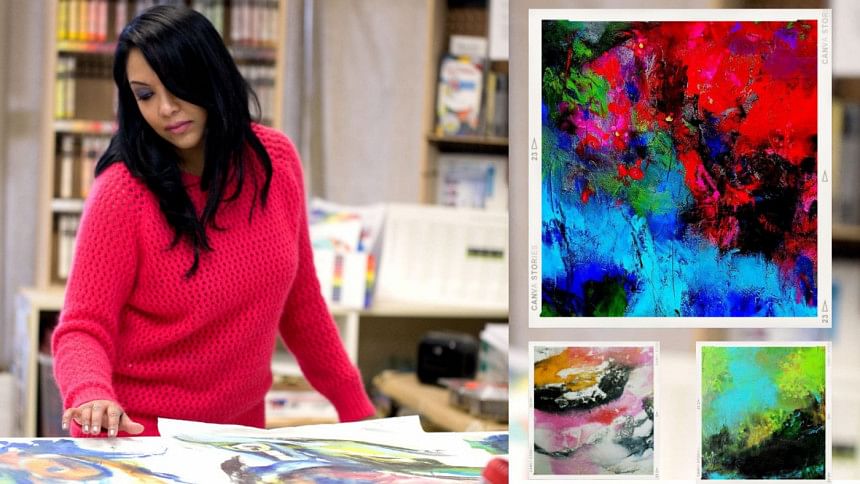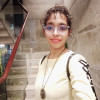Inside Shayema Rahim’s canvas: Discussing abstract art, legendary lineage

Abstract art, one of the most modern art forms, has captured people's hearts due to its ability to invite multiple interpretations. Moreover, it does not demand an art degree. This enigmatic domain of art weaves a complex fabric of emotions, colours, and shapes that break free from the confines of the tangible world. At the helm of this extraordinary odyssey is Shayema Rahim, an artist whose brush strokes and vision have carved an indelible niche in the world of contemporary art.

Shayema Rahim is an artist, a mother, a daughter, a people connector, and a lover of life. She has embraced Dallas as her home for the past 27 years and participated in solo and group art exhibitions across the United States. She has also showcased her work in Bangladesh. In addition to her role as an artist, she works as a talent manager in the telecom, healthcare, and IT industries, collaborating with major companies in the US.

In an exclusive interview with The Daily Star, the artist talks about her journey and motivations.
Why did you select abstract art as your speciality?
Abstract expressionism is my chosen art style. Abstract art offers me a significant degree of creative freedom, allowing me to convey my thoughts and emotions without the confines of representing the physical world. My ideas, concepts, and feelings would be challenging to express through figurative art. Thus, I turn to shapes, colours, and textures.

Abstract art is also open to interpretation by viewers, who bring their own understanding, perspectives, emotions, and experiences to the artwork, making it diverse and intriguing. I believe abstract art can be intellectually stimulating, inviting viewers to analyse and contemplate the artist's choices in terms of composition, colour theory, and artistic techniques.
What is your work philosophy?
In everything I do, I approach it with compassion and dedication. Creating impactful work is paramount to me, and discipline is a prerequisite. I strive to pour 100% of my energy into creating thought-provoking work because art reflects your energy.

You are the niece of the legendary Novera Ahmed. How has this fact influenced you?
Novera Ahmed is known to me as 'Rani khala', and I hold her in tremendous respect as my aunt. Unfortunately, I never had the chance to meet her as she left West Pakistan long before I was born. However, I have heard fascinating stories about her. She was a trailblazer, unafraid to pursue her dreams regardless of societal expectations.
As an artist, I do feel the weight of comparison, but she exists on a different plane. She was a unique individual, greatly misunderstood, and far ahead of her time. May she rest in peace.

Which artists and art movements have inspired you?
My artistic style is abstract expressionism, and my favourite artist is Helen Frankenthaler. The art style is characterised by abstract forms and a focus on the emotional and gestural aspects of the artwork. While I occasionally explore floral and landscape themes, most of my paintings have a story behind them. I am drawn to the emotional quality of abstract art.

What advice would you offer young individuals aspiring to pursue art?
Authenticity is key to creating meaningful and unique art. Failure is an integral part of the creative process and can lead to breakthroughs. Embrace constructive criticism from peers, mentors, and even critics. Trust your instincts and use feedback to refine, not dictate your creative process. Develop a portfolio that showcases your best work, as a well-curated portfolio is crucial when seeking opportunities or approaching galleries.

Success in the art world often takes time. Taking creative risks can lead to innovation and unique artistic expressions. Remember that each artist's journey is unique. Ultimately, the most important thing is to stay dedicated to your craft, remain passionate about your work, and continue growing as an artist throughout your career.
Shayema Rahim completed her undergraduate and postgraduate studies at the University of North Texas and Cornell University, respectively.

 For all latest news, follow The Daily Star's Google News channel.
For all latest news, follow The Daily Star's Google News channel. 




Comments